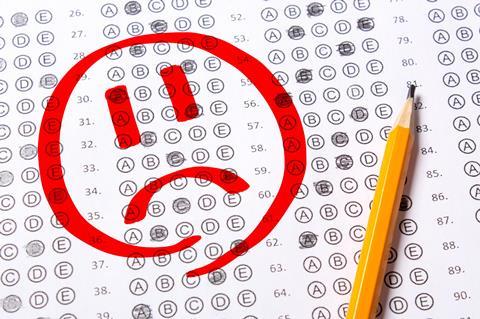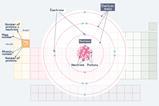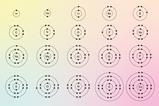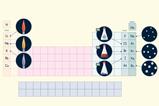Is your class simply telling you what they think is the right answer, or have they really grasped the concept?
In a typical week, you’ll assess students multiple times, in a variety of ways. But how often do you dig below the surface to find out why they got things right or wrong? Does a wrong answer indicate that students didn’t understand the underlying science, or that they couldn’t interpret the question? And if they were correct, can you be sure they’ll get the same question right in the future, or in another context? How can we help them to make links between apparently different ideas?

Students can be well-practised at answering questions, without fully understanding why they got them right. I really struggled to understand organic mechanisms in my first year at university, for example, so I memorised them. This shortcut got me through my imminent exams, but I came unstuck later. Right answers feel good at the time, for teachers as well as students, but future progress can be hampered if they aren’t underpinned by deeper understanding.
Concepts are the foundations for future ideas, and teachers’ complex conceptual schemas allow them to connect apparently distinct ideas. For example, understanding atomic structure helps me predict how ionisation energies will vary between elements, recognise why potassium reacts violently with water, and appreciate why iodine is a solid at room temperature.
The nature of teaching is that we’ll always feel pushed for time, so it can be tempting to accept correct answers from students, whether or not we are confident they fully understand all the underlying concepts. But it’s worth taking the time to ensure our students can make those all-important links further down the line.
Planning and assessment
Identify key conceptual ‘bottlenecks’, which allow (or prevent) further understanding, for each topic you teach, and assess them regularly. This will lay the groundwork for future ideas, and the testing itself will help students remember them. The assessment doesn’t have to be formal or time-consuming: setting a quick quiz at the start of the lesson or posing a hinge question as below will suffice. The important thing is to give immediate feedback, so you can respond to misunderstandings before they become entrenched.
Example hinge question
When magnesium chloride melts, the liquid comprises … ?
- Magnesium and chlorine atoms.
- Magnesium and chloride ions.
- Magnesium chloride molecules.
- Magnesium and chloride atoms.
Don’t be afraid to revisit more fundamental concepts. For example, when you talk about the physical properties of substances, you could relate this to basic particle theory. The ‘particles’ might represent single atoms, diatomic molecules, polymers or ions, depending on the substance. Help students to make connections between the box diagrams they drew in year 7 and more advanced ideas.
Help students to make connections between apparently distinct ideas by using Johnstone’s triangle to identify ways that your current topic links with previous ones. The triangle describes three conceptual levels in chemistry: the sub-microscopic, macroscopic and symbolic, and is a useful planning framework. Students tend to focus on things they can observe directly, so pointing out sub-microscopic connections will help them make links between ideas. For example, the electrolysis of copper sulfate appears to be very different to a typical precipitation reaction on a macroscopic level, but in both cases, solvated ions are reduced and come out of a solution.
Support students to build new schemas by connecting new concepts to ones that are already embedded. You can do this by asking simple ‘why’ questions, or encouraging them to consider how two concepts are linked. Or you might ask students to self-explain concepts to themselves, such as the steps they need to perform to solve an equation.
Assess students’ understanding of a particular idea multiple times, and in a variety of ways. Remember correct answers alone don’t necessarily indicate deep conceptual understanding, so it’s important not to see a correct response as the end of the story.
True/false questions are a quick way of assessing understanding. They are simple to mark and can be a great way to stimulate discussion. But bear in mind that they can make it easier for uncertain students to guess the answer, masking misunderstanding.
For example, before introducing ionisation energies to students for the first time, you could ask them to discuss the questions on the Chemical Misconceptions handout from Learn Chemistry, to help scaffold discussions about atomic structure and forces.
For example, before introducing ionisation energies to students for the first time, you could ask them to discuss the questions on the Chemical Misconceptions handout from Learn Chemistry, to help scaffold discussions about atomic structure and forces.
You can use multiple-choice questions to highlight misunderstandings, and these are particularly powerful if you use common misconceptions as ‘red herrings’. Misconceptions resources such as those from Learn Chemistry and AAAS are a useful source of alternative answers, and many are freely available and sorted by topic.
You can use multiple-choice questions to highlight misunderstandings, and these are particularly powerful if you use common misconceptions as ‘red herrings’. Misconceptions resources such as those from Learn Chemistry and AAAS (assessment.aaas.org/topics) are a useful source of alternative answers, and many are freely available and sorted by topic.
If we want to nurture and develop our students to think as chemists, they need a secure conceptual understanding, but this is tricky to assess. But we can support our students to make the connections that are second nature to us if we are explicit in pointing them out. And we can help to ensure they really understand things, if we accept that assessment is seldom a one-off event, and never the end of the story.
Niki Kaiser is the network research lead for the Norwich Research School and a chemistry teacher at Notre Dame High School














1 Reader's comment